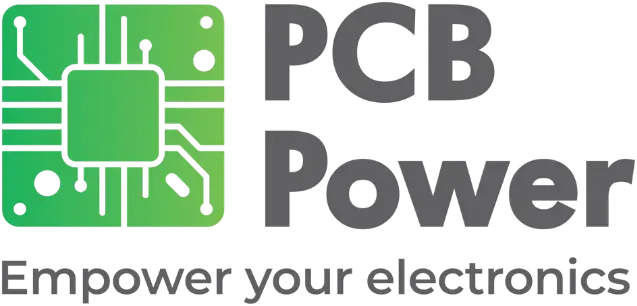
FR4 Printed Circuit Boards - Why Use Them for Electronic Applications — PCB Power Market India
Designing electronic circuit boards requires material substrate considerations. This is because it is impossible to fabricate printed circuit boards without proper PCB materials. While it is necessary to consider the copper layers, silkscreen, and the surface finish when designing and manufacturing circuit boards, it is equally important to consider the substrate material. In general, PCB substrates require the use of non-conductive materials like ceramic, arlon, FR4, and similar.
What is FR4?
The properties and characteristics of the FR4 material make it an ideal selection for use in diverse application areas. Being versatile and cost-effective, FR4 is a popular material across all users and manufacturers for PCB manufacturing and assembly. This makes FR4 the backbone material for most rigid electronic circuit boards.
FR4 is a common denomination of the epoxy resin, glass-reinforced laminate, or substrate, as NEMA defines it. The FR is an acronym for flame retardant but it does not denote that the material complies with the UL94V-0 or flammability requirements standard. The number 4 distinguishes it from other materials with a similar class.
Typically, the FR4 material provides the printed circuit board’s mechanical structure, its circuit integrity, and safety. To facilitate its flame retardant properties, the epoxy resin system employs bromine and halogen. It prevents the spreading or propagation of fires when the material has started to burn, it also extinguishes the flames. FR4 starts off as a fiberglass composite woven into a thin, cloth-like sheet as a laminate, which is then bound by a non-conductive and flame-resistant epoxy resin to complete the circuit board.
While the fiberglass provides structural integrity, the epoxy resin offers the circuit board its rigidity, flame retardant capability, and other essential material attributes. That makes FR4 popular as a base material for printed circuit boards. Furthermore, other characteristics of FR4, like its temperature and moisture resistance, its high strength-to-weight ratio, and its lightweight nature also help.
Types of FR4
The FR4 material comes in different types, with each type possessing diverse attributes. To pick the right material for an application, it is necessary to understand the specific attributes of the glass-reinforced epoxy-resin structure, as it will form the fundamental platform for all forms of FR4 PCBs. The various attributes include the FR4 materials’ coefficient of expansion, dielectric constant, glass transition temperature, and more. Therefore, it is imperative to understand the different attributes of the material along with the corresponding FR4 material types.
In addition to types, there can be different layers to an FR4 PCB. Depending on whether the electronic circuit board is a single-layered copper clad, a double-layered copper clad, or a multi-layered copper clad board, the glass-epoxy PCB will come in various thicknesses and will have different properties depending on its design.
FR4 Classification
In the industry, FR4 printed circuit boards’ classification depends on different attributes. These include:
Thickness
FR4 boards are available with different thicknesses. While the standard thickness for FR4 boards is 1.57 mm, triple thicknesses are also available as 2.36 mm, respectively. Thinner than standard is also available at 0.5 mm. The copper-clad boards can have copper thicknesses ranging from 18 µm to 140 µm. However, the most popular thickness for FR4 boards is 1.6 mm.
Source
The source of the FR4 material is also important. Based on the manufacturer of the material, the industry classifies the FR4 board as Nanya FR4, Isola FR4, etc.
Material Attributes
Depending on the different thermal attributes of various FR4 materials, the industry classifies them as high-Tg material, high decomposition material, low CTE material, and so on.
Electrical attributes like dielectric constant, volume resistivity, surface resistivity, relative permittivity, and so on, are also considered important for classification by the industry.
Thermal Properties
Some important thermal attributes of the FR4 material are:
Glass Transition Temperature or Tg
The glass transition temperature is an essential aspect of any PCB substrate. It is the temperature beyond which the substrate transforms from its rigid structure to a soft and plastic material. The Tg point denotes where the material starts to have significant changes in its thermal properties, and above which, it starts to expand in an isotropic manner.
The entire range of glass-transitional temperature covers 130 °C to 370 °C. Within this range, FR4 materials are available with specific characterizations of low, standard, and high Tg. The low Tg FR4 material has a glass transition temperature of 130 °C to 140 °C, for standard Tg material the glass transition temperature is 150 °C to 160 °C, while the high Tg FR4 material can withstand temperatures above 170 °C. However, other factors must also be considered, such as dielectric value, coefficient of expansion, etc. for determining its nature.
High Tg FR4
Although most FR4 PCB materials fall under the low Tg category, for multi-layered PCBs, high Tg Fr4 is more popular. Therefore, it is usual to find FR4 with Tg 130, FR4 with TG 150, FR4 with TG 170, and FR4 with TG 180.
Advantages of using high Tg FR4 material are it has better heat and moisture resistivity, enhanced stability, and better chemical resistance.
Decomposition Temperature
This denotes the temperature at which the FR4 material decomposes permanently. For FR4 material, this happens at the highest Tg value of 180 °C. Beyond this temperature, the chemical properties of the FR4 material change permanently.
Coefficient of Thermal Expansion
Typically, the FR4 material has a low CTE or coefficient of thermal expansion. That makes it suitable for use as a substrate in many heat-emitting applications. Both CTE and thermal conductivity are dependent on the board thickness.
Electrical Properties
The electrical properties of the FR4 material are also important enough to be considered when selecting the material for an application. These include the following:
- Dielectric Constant
- Surface Resistivity
- Volume Resistivity
- Relative Permittivity
Using FR4 for Circuit Board Manufacturing
For low-cost, quality printed circuit boards, FR4 is a very suitable material. The FR4 substrate forms the insulating backbone, and once the fabricator laminates it with a copper foil, it forms the copper-clad for making different layers of a multi-layered board for a complex circuit.
While the FR4 provides the mechanical rigidity to the board, the copper foil forms the circuitry on which to mount the electrical components. The copper foil must be etched to form the proper circuit, after which the PCB manufacturer covers it with a solder mask, places a surface finish on the exposed pads, and covers it with a silkscreen layer. After the PCB fabrication is complete, the board goes for component mounting and soldering to anchor them to the board.
The application often defines the thickness of the FR4 material. Applications that require the board to undergo vibrations require an adequate thickness of the board to prevent it from cracking or breaking. However, thicker boards increase the cost, which means a compromise is often necessary.
Conclusion
The versatile FR4 material is very popular for PCB manufacturing and assembly. FR4 has varied attributes encompassing a wide range of temperature and frequencies when used in electronic circuit boards. For standard applications, the low cost of the FR4 materials also acts as an attraction.



